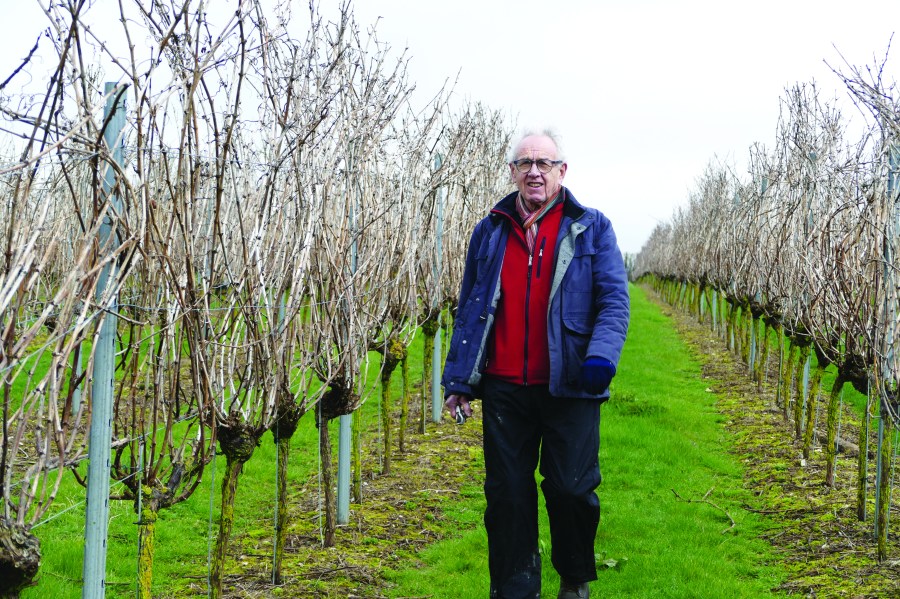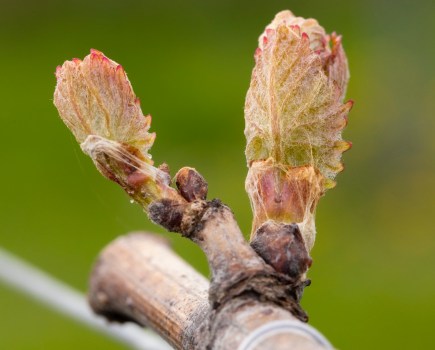The flap of the butterfly’s wings that brought me to a life of wine was a three-line classified advertisement in the Daily Telegraph. It said “Bright lad wanted in shipping office. Experience not as essential as willingness to learn. Box No. 2305”. I applied and six months later found myself in the office of a small wharf and warehouse company at Denton Wharf, Gravesend, then, as now, the first wharf on the Thames.
It was 1968 and I was 20. After working there for a year or so, my boss suggested I join a skiing party he was organising, and although never having skied before, I signed up.
In January 1970 we arrived at the Hotel Cervosa in the Austrian skiing resort of Serfaus and walking through the front doors, late at night after a long drive, we were greeted by an attractive blond receptionist who turned out to be, not the classic Tyrolean mädchen I first took her to be, but a farmer’s daughter from Tenterden in Kent! One thing led to another and in September 1971, we were married, thus starting my journey into wine.
In early 1972, with our first child recently born, the need for a larger house soon became apparent and one Saturday morning we set out house-hunting. One of the houses we looked at that weekend was in Nettlestead, near Maidstone, and as we drove into the drive, we were confronted with a small vineyard. We looked round the house, asked a few questions about the vineyard, and went on our way to the next appointment. As I recall things, we didn’t like the house or it was too expensive, and the house was ticked off as being a firm ‘no’. The vineyard however, did stay in my mind and over the next few days I found out a bit more about the world of English and Welsh viticulture.
In those days, without the internet and websites, the first port of call was the library in whose ‘reference section’ directories of the whole country could often be found, plus Yellow Pages, the business directory. I soon established that there was an English Vineyards Association (based in Felsted, Essex, the village where I spent 10 years at school and near where I spent the first 20 years of my life) and made contact, and eventually joined it. My parent’s house was in the CM3 postcode whose southern edge is pretty much the whole of the north shore of the river Crouch, today the much-talked about ‘Crouch Valley’ and from our bathroom window we could see the spire of Danbury Church.
The next time we visited my parents, we took it upon ourselves to go to the only vineyard in that area, New Hall Vineyards, established in 1969, where we were greeted by its owner Bill Greenwood (wearing, as I recall, both a belt and braces). I don’t remember if we looked around, whether we bought any wine, or what Bill told us about running a vineyard, but whatever happened, it didn’t dent our enthusiasm for the subject.
At that time I was working for my father-in-law, John Leroy, who having made a success out of a travel company and sold out – he and his father had invented what today we would call package holidays – they had then decided to invest their family money into a 2,500 acre farming estate in Tenterden. John Leroy, not having a farming background, was always interested in something new in agriculture and on hearing about our interest in vineyards, started to ask questions. He accompanied me to a viticulture conference held at the Royal Agricultural Centre at Stoneleigh in Warwickshire, put on by the British Farmer and Stockbreeder, a magazine owned by the NFU.
After more research, visiting vineyards and talking with the then luminaries of this small branch of horticulture, I decided the best way to further my career in wine was to go and work in Germany, the source then of almost all the vine varieties we grew.
Despite not speaking a word of German (luckily my wife had picked some up during her six months working in Austria) we set out in a camper van right at the end of December 1974, to visit three wine producers with whom I had been in contact and who offered me interviews. The first two didn’t seem keen to help, and after relatively short meetings, we went on our way. The last one, Sichel’s in Mainz, the makers of Britain’s then most popular white wine, Blue Nun, didn’t really understand what we wanted and had merely invited us to visit as a PR exercise.
We visited their Mainz bottling plant, tasted a very large selection of wines that had been laid on for a visiting British wine merchant, and fairly late in the afternoon, their then assistant sales director, Riquet Hess, popped his head round the door to pay his respects. After the usual questions ‘what are you doing here’ and ‘what are you after’ he said ‘Lets go for a beer’ and we then laid out our plans to Hess. What we didn’t know about him was that as a teenager, he had spent time on a Somerset dairy farm, and had even considered at one time staying in Britain and taking up farming.
In us therefore, he saw something of a parallel and after far too many beers, he said ‘don’t worry, I can help’. This almost chance meeting led to Hess finding two wine estates who would take me, and after some negotiations, I finally secured a place as a praktikant, what we today would be called an intern, at the largest privately owned wine estate in Germany, Schloss Schönborn in Hattenheim in the Rheingau, arguably Germany’s most prestigious wine growing region. It was also very near to Geisenheim, a village world famous for its wine university. Schönborn, founded in 1349, was a very old-school estate and was run for the Graf by a genial betriebsleiter Robert Englert, who fixed me up with a hotel to stay in for three weeks (the now famous Zum Krug) whilst the company flat he’d earmarked for me became vacant.
It was June 1975, in the middle of a heatwave, and the smallest and undoubtedly cheapest room in the hotel, a single situated right above the kitchen range, was hot as hell. Englert introduced me to the hotelier and said he would see me at 7am the next morning ‘in the hof’ i.e. the courtyard in front of the winery, and where everything happened. I didn’t know quite what to expect, but duly turned up, wearing shorts and on my feet, the black boots that had been my school ‘corps’ boots. Thus started my first day in wine.
Wine Growing in Great Britain – Second edition is an A to Z of growing vines in the UK
For anyone contemplating planting and establishing a vineyard in the UK, and for those already growing vines on a small scale who perhaps wish to expand their vineyards and improve their winegrowing skills, it will be invaluable. It will also be of interest to students of viticulture. Wine Growing in Great Britain covers not only the viticultural tasks involved, but also, uniquely, the finances of UK wine growing: land costs, vineyard establishment and management costs and the income from both grape sales and wine sales.




